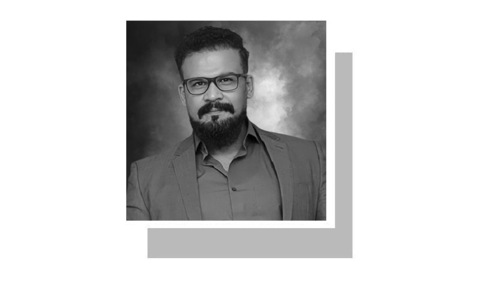ON July 29, Narendra Modi’s government unveiled what it calls a groundbreaking new national education policy (NEP 2020). The 65-page document’s wide range — from primary to university — forces me to consider here just a single issue: To what extent does NEP reflect the BJP ideology of Hindi-Hindu-Hindustan? And how does it compare against Pakistan’s newly declared single national curriculum with logo: one nation, one curriculum?
At face value NEP is innocuous, even charming. It speaks of India’s rich heritage, the ancient universities of Nalanda and Takshashila, mathematicians like Bhaskaracharya and Brahmagupta, jnan (knowledge) and satya (truth) etc. The goal of education is: “complete realisation and liberation of the self”. Who can possibly object? Still better: my computer word search yielded only two occurrences of the word ‘religion’, both times in the harmless context of NEP’s purported inclusion of all religions.
NEP also engages our anti-colonial sensibilities: Indian children up to grade 6-7 can learn English if they want but, under its new three-language formula, states and regions can choose their languages provided at least two of the three are native to India. In principle Hindu, Muslim, Sikh, and Christian students will use the same books, study side by side in the same classrooms, and take the same exams. Wonderful!
But inside NEP’s not-so-hidden agenda are the clear wishes of RSS, the BJP’s ideological parent. RSS follows its guru, M.S. Golwalkar, who suggested India learn from Hitler in keeping races pure. In 1947, RSS wanted all Muslims remaining in India expelled to Pakistan. Then a minority, it now enjoys full state support.
India must look towards its glorious past, declares NEP, with that past exclusively Hindu. Although Sanskrit is a culturally dead language, NEP calls it the fount of all sacred and secular knowledge. Urdu, on the other hand, although spoken by tens of millions of Indians and once the language of the Bombay film industry, is absent from a list that includes Tamil, Telugu, Kannada, Malayalam, Odia, Pali, Persian, and Prakrit.
India and Pakistan’s new education policies will push their respective religious minorities into a corner
All education policies are cooking recipes; the final product depends upon ingredients. NEP hints at, but leaves unspecified, what textbooks will contain. Will history be dispassionately presented as a series of invasions which, layer by layer, built Indian culture over the millennia? Or are Muslims merely wicked temple-destroyers who shattered the seraphic heaven of Mother India? One worries because in BJP-ruled states, leaders have demanded removal of references to Mughal emperors Akbar and Aurangzeb to make space for Hindu kings like Maharana Pratap and Shivaji.
Interestingly, RSS’s nativism appears driven more by its anti-Christian agenda than its anti-Muslim one. Since the days of Lord Macaulay, convents and other English-medium Christian missionary schools have been the mainstay of modern Indian education. But today, tens of thousands of RSS-associated vernacular language schools stand against them. These will gain from downgrading English.
RSS pracharaks are jubilant but Indians face a reality check. English-medium schools, not traditional patshalas and gurukuls, modernised India and gave it global clout. While India can name its satellite ‘Aryabhatta’, Isaac Newton’s laws actually guided it into orbit. Even the BJP minister whose signature is on NEP, Prakash Javedekar, knows this. From Indian press reports I found that he, along with nine other BJP ministers, has also sent his children to study abroad.
NEP is a step backward for India’s national integration. In spite of 30 languages, 130 dialects, and well over a dozen faiths, India took barely 50 years to create a national identity after Jawaharlal Nehru set it on a secular track. Most Muslims, Sikhs and Christians were then proud to declare themselves Indian. But, as Indian secularism retreats, this is now disappearing.
Pakistan’s new education policy, only parts of which are known so far, is much more upfront on creating a religion-based society. The goal is to put madressahs at the same level as all other kinds of schools. Henceforth, bearded men from the Ittehad Tanzimat-i-Madaris (Coalition of Madressah Organisers) will decide what Pakistani children will learn and will also scrutinise their textbooks.
Religious materials are mandatory from nursery classes onward. The new Class 1-5 curriculum is extremely detailed and reveals more religious content to be memorised than even madressahs require. Discrimination is automatic. Since non-Muslim students cannot be allowed to study from the Holy Book, they must be separated.
Major changes are afoot at higher levels as well. The governor of Punjab, Ghulam Sarwar, told me during an exclusive one-on-one meeting in his office on July 23 of his decision to make the award of all university degrees in Punjab contingent upon studying the Holy Quran together with translation. Doing so, he said, will ensure that our university students learn Arabic. He did not elaborate on how this would help make better doctors, economists, engineers, or scientists.
For building national identity Pakistan seeks to Arabicise and Islamise whereas India wants to indigenise and Hinduise. The BJP’s way is more subtle than Pakistan’s but cleverer because it understands the enormous power of culture. Programmes such as ‘Aik Bharat Shreshtha Bharat’ aim at developing a multilingual, multicultural (but not multi-religious) Indian national identity.
Compare that with education policies in Pakistan where regional cultures and languages find only fleeting references. With no lessons learnt from 1971, Pakistan still assumes that solidifying its Islamic identity will somehow create national integration. Even something as mild as the 18th Amendment, which entrusts education to the provinces, has the sword of Damocles hanging over it.
The new education policies of India and Pakistan will further divide them, both from each other as well as within each country. Majoritarian consensus against their respective religious minorities will be hugely strengthened. The Indian policy is milder in tone than Pakistan’s but is probably more dangerous simply because it is better thought out and professionally formulated, hence, likely to be more successful when implemented. On the other hand, the Pakistani policy document is half-baked, wrapped in multiple layers of confusion, and will almost certainly flounder. But if it is implemented, it will lead to fasaadi extremism of a kind that operations like Radul Fasaad cannot ever defeat.
The writer teaches physics in Lahore and Islamabad.
Published in Dawn, August 8th, 2020















































